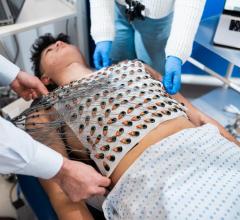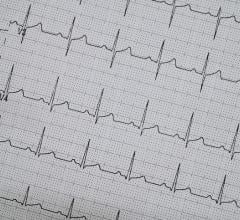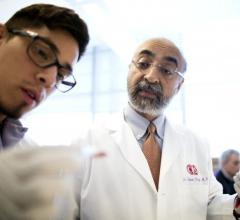
March 21, 2016 — Researchers from NewYork-Presbyterian/Columbia University Medical Center (CUMC) have authored a study that may help understand cardiac risk in National Basketball Association (NBA) players and other athletes.
The study, published Feb. 24 in the inaugural edition of JAMA Cardiology, will help inform prevention strategies for cardiac emergencies for these athletes.
Basketball players have the highest incidence of sports-related sudden cardiac death (SCD) in the United States among all athlete groups. The most common cause of SCD for American athletes is hypertrophic cardiomyopathy (HCM), a condition that results in the thickening of the wall of the left ventricle, forcing the heart to work harder with every beat.
Little has been known about athletic cardiac remodeling in basketball players or athletes of similar size.
“Until now, very little data has been collected to help distinguish expected differences in a basketball player’s heart from underlying abnormal cardiac conditions,” said David J. Engel, M.D., cardiologist at NewYork-Presbyterian/Columbia, associate professor of medicine at CUMC and the study’s lead author.
Researchers analyzed echocardiograms of 526 NBA players for the 2013-14 and 2014-15 seasons in collaboration with the NBA, the NBA Players Association and the NBA Team Physicians Association. They examined athletes’ heart function and structure, including left ventricular size and wall thickness, hypertrophy patterns and function, left atrial volume and aortic root volume.
The study found that the size of the left ventricle, while larger than in normal adults, is proportional to the player’s size. In contrast, the size of the aortic root does not continue to increase proportionally with height. An abnormally large aortic root could indicate a risk of SCD or the presence of Marfan’s syndrome, a genetic condition that can cause enlargement of the aorta. Among the other key conclusions:
- NBA players with an aortic root size greater than 41mm should be evaluated regardless of their height;
- Physicians now have a more accurate framework for assessing the risk of SCD in basketball players and other athletes, especially those who play sports that select for height; and
- A full medical evaluation with complete clinical history should take place before making a conclusive diagnosis.
"This is a considerable leap in the right direction. The results of this study will provide an invaluable frame of reference to enhance player safety for the large group of U.S. basketball players at all skill levels and in the athletic community at large,” said Shunichi Homma, M.D., director of noninvasive cardiac imaging at NewYork-Presbyterian/Columbia, the Margaret Milliken Hatch Professor of Medicine at CUMC, and one of the study’s key researchers.
“This research presents a significant addition to our ability to assess and identify athletes who may be at risk,” said Allan Schwartz, M.D., chief of the Division of Cardiology at NewYork-Presbyterian/Columbia, the Seymour Milstein and Harold Ames Hatch Professor of Medicine at CUMC, and an author on the study. “Our goal is to prevent cardiac emergencies in not just basketball players, but individuals in all athletic disciplines.”
The NBA is making great strides in early detection and prevention of cardiac conditions by requiring each player to have a medical evaluation that includes a stress echocardiogram, standardizing the evaluation method and coordinating the review of the data.
NewYork-Presbyterian/Columbia is reviewing these echocardiograms and working with other leading cardiologists, NBA team physicians and the NBA to develop a new standard of cardiac data that will serve as a frame of reference in the evaluation of basketball players and athletes of similar size.
For more information: www.cardiology.jamanetwork.com


 January 30, 2024
January 30, 2024 








